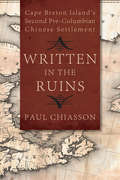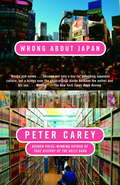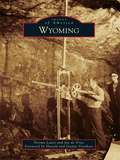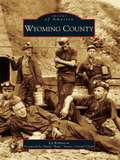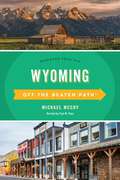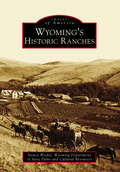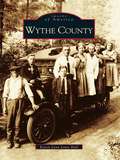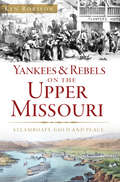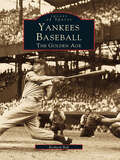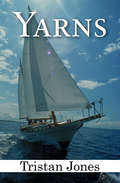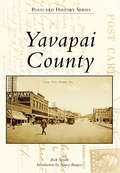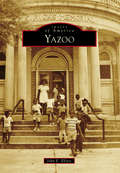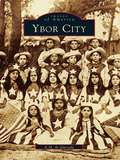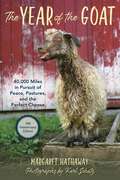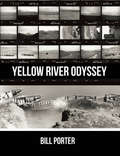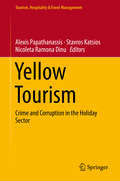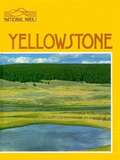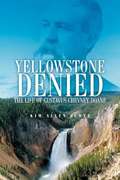- Table View
- List View
Written in the Ruins: Cape Breton Island’s Second Pre-Columbian Chinese Settlement
by Paul Chiasson2017 Robbie Robertson Dartmouth Book Award — Shortlisted Paul Chiasson reveals the possibility that early Chinese settlers landed in Cape Breton long before Europeans. From the very beginning of the European Age of Discovery, Cape Breton was considered unusual. The history of the area even includes early references to the island having once been the land of the Chinese. In 1497, at least a century before any attempt at European settlement in the region, the explorer John Cabot had referred to Cape Breton as the “Island of Seven Cities.” The indigenous people of the region, the Mi’kmaq, were the only aboriginal people of North America who had a written language when Europeans first arrived. This writing, clothing, and customs also suggested an early Chinese presence. In Written in the Ruins, Chiasson investigates the ruins at St. Peters in the southern part of the island, where evidence brought to light supports a theory that could answer all the questions raised by the island’s curious, unresolved history.
Wrong About Japan: A Father's Journey with His Son
by Peter CareyPrevious winner of two Booker Prizes, Peter Carey expands his extraordinary achievement with each new novel -- but now gives us something entirely different. When famously shy Charley Carey becomes obsessed with Japanese manga and anime, Peter is not only delighted for his son, but entranced himself. Thus, with a father sharing his twelve-year-old's exotic comic books, begins a journey that will lead them both to Tokyo, where a strange Japanese boy will become both their guide and judge. The visitors quickly plunge deep into the lanes of Shitimachi -- into the "weird stuff" of modern Japan -- meeting manga artists and anime directors, "visualists" who painstakingly impersonate cartoons, and solitary "otakus" who lead a computerized existence. What emerges from these encounters is a pithy, far-ranging study of history and culture both high and low -- from samurai to salaryman, from kabuki theatre to the post-war robot craze. Peter Carey's observations are provocative, even though his hosts often point out, politely, that he is wrong about Japan. In adventures that are comic, surprising, and ultimately moving, father and son cope with and learn from each other in a place far from home. "No Real Japan," said Charley. "You've got to promise. No temples. No museums." "What could we do?" "We could buy cool manga." "There'll be no English translations." "I don't care. I'd eat raw fish." --excerpt from Wrong About Japan.
Wyoming
by Jay De Vries Norma LewisWyoming, Michigan, became a city in 1959, the same year Alaska and Hawaii became states, but its history began more than a century earlier. The first permanent settlers came in 1832, and in 1848, the region split, with the northern portion becoming Wyoming and the southern, Byron Center. Wyoming flourished. The farmers came first with the businesses that supported them. Industry followed. The various gypsum mines were among the earliest arrivals. General Motors built a stamping plant on Thirty-sixth Street that helped pull the township out of the Great Depression in 1936. It was a success, so the company built a diesel plant on Burlingame Avenue. Reynolds Metals, Steelcase, Light Metals, Bell Fibre, and others found Wyoming a good place to relocate. People wanted to live where they worked, and that meant an ever-increasing number of houses were built, followed by additional schools, churches, shops, and restaurants. Rogers Plaza was West Michigan's first enclosed mall. Though often contentious, the local government did its best to live up to an ambitious slogan, "Wyoming: the City of Vision and Progress."
Wyoming County
by Ed Robinson David Bugs" StoverBecause of its rich coal heritage and breathtaking scenery, many regard Wyoming County as the hidden gem of southern West Virginia. The county's vibrant history began with Native Americans, whom many believe left behind the petroglyphs that attract national attention, and continued to its early residents, who farmed and flourished in the logging industry. In 1906, when the Deepwater Railroad (later the Virginian) came to the town of Mullens, Wyoming County's role as a provider of the nation's natural resources was strengthened. By the 1920s, the county was one of West Virginia's foremost coal-producing counties; it maintains that position today. In addition to its integral part in resource exportation, Wyoming County is legendary for its sports scene. Such great players and coaches as Curt Warner, star running back of Penn State and the Seattle Seahawks; Mike D'Antonio, head coach of the Phoenix Suns; and Joe Pendry, assistant coach of the Houston Texans, got their start in Wyoming County. In recent years, this area has been best known for its recreational opportunities. Twin Falls State Park and R. D. Bailey Lake attract thousands of tourists annually, and the Coal Heritage Trail gives residents and visitors alike a chance to see how coal influenced the growth of the region.
Wyoming Off the Beaten Path®: Discover Your Fun (Off the Beaten Path Series)
by Michael MccoyWyoming Off the Beaten Path features the things travelers and locals want to see and experience––if only they knew about them. From the best in local dining to quirky cultural tidbits to hidden attractions, unique finds, and unusual locales.
Wyoming's Historic Ranches
by Nancy Weidel Wyoming Department of State Parks and Cultural ResourcesWyoming is so closely identified with ranching that it is often known as "the Cowboy State." The prosperity associated with the cattle industry drew wealthy investors to Wyoming Territory in the 1870s and early 1880s. They stocked the range with thousands of cows and made considerable fortunes until the harsh winter of 1886-1887, when the cattle market collapsed. Many of those early ranchers left Wyoming, which opened the door for the establishment of what would become a huge sheep business. During the 1890s and the early decades of the 20th century, the various Homestead Acts drew others to Wyoming in search of a brighter future. As most of Wyoming's land was suited for grazing, not farming, smaller ranches began to play a more important role in the state's growth. Wyoming's Historic Ranches provides a rare glimpse of the cattle baron ranches as well as the more modest operations that are tucked away along remote valleys and streams, not visible to the average visitor or resident of the state.
Wythe County
by Karen Lynn HallNestled in the heart of the Blue Ridge Mountains of Southwest Virginia lies the historically rich Wythe County. The area was originally settled due to the proximity of the New River, one of few rivers in the world that flows north. The county is named after George Wythe, signer of the Declaration of Independence. In 1863, the Civil War Battle of Wytheville brought federal troops into the heart of the county, hoping to interrupt the flow of necessary salt from the mines at nearby Saltville. During the 1800s, Wythe County was known for its mineral waters and as a mountain resort for wealthy residents of hot, humid areas who came for the summer to vacation. Having flourished throughout the 20th century, the county still retains its rural charm. Wythe County captures many charming scenes of country life, Virginia's train and travel industry, numerous long-forgotten vistas, some of Wythe County's finest citizens, and the area's most notable landmarks.
Xstabeth
by David KeenanINCLUDES 'PREQUEL' THE TOWER THE FIELDS THE TRANSMITTERS'This book spoke, it said "read me" from the very first sentence as if it were alive, it gave me visceral joy' Kim Gordon'Reading [Xstabeth] feels like being cut open to the accompanying sound of ecstatic music' Edna O'Brien'Prepare for more of that inimitable Keenan narrative voodoo brilliance' Wendy ErskineIn St Petersburg, Russia, Aneliya is torn between the love of her father and her father's best friend. Her father dreams of becoming a great musician but suffers with a naivete that means he will never be taken seriously. Her father's best friend has a penchant for vodka, strip clubs and moral philosophy.When an angelic presence named Xstabeth enters their lives - a presence who simultaneously fulfils and disappears those she touches - Aneliya and her father's world is transformed. Moving from Russia to St Andrews, Scotland, Xstabeth tackles the metaphysics of golf, the mindset of classic Russian novels and the power of art and music to re-wire reality. Charged with a consuming intensity and a torrential rhythm that pulses with music, it is an offering of transcendence and a love letter to the books of Chandler, Nabokov and Dostoevsky, by a writer who is rewriting the rulebook of contemporary fiction.
Xueños: La historia detrás de Xcaret, el mejor parque del mundo
by Miguel Quintana PaliXoñar es visualizar una gran idea en acción. «Tienes que aprender a xoñar bonito o, de lo contrario, despertar a tiempo». Miguel Quintana Pali Hay pocas historias en México que han cambiado la vida empresarial y social del país como la del arquitecto Miguel Quintana Pali, fundador y director general de Grupo Xcaret. El pionero del turismo sostenible sintetiza sus casi cinco décadas de experiencia como emprendedor-empresario -primero como tendero, luego como parquero y, ahora, hotelero- en una serie de consejos para quienes buscan iniciar un negocio y los musts para tener éxito. Desde sus primeros negocios escolares y la invención de una lámpara de mesa que lo hizo dar el salto a emprender y fundar las Tiendas Pali, Quintana cuenta cómo convirtió a Xcaret en una embajada de México que hoy recibe dos millones de visitantes al año y es conocido a nivel mundial. En un recorrido por su vida a la par que por la historia del Grupo Xcaret descubrimos cómo fueron surgiendo las ideas para los parques y el proceso de creación de algunas de las atracciones más emblemáticas, los retos para presupuestar una forma de arquitectura que respeta la naturaleza, las diferencias entre socios, la sostenibilidad 360º, las estrategias de operación y marketing, la innovación tecnológica inhouse, las distintas acciones sociales que se han vuelto parte del ADN del grupo y de su gente, la filosofía basada en la felicidad hacia dentro y fuera de la organización y finalmente los proyectos que están en el tintero o ya construyéndose para ser una realidad. Una mirada íntima al genio creativo de una de las mentes más divergentes y comprometidas con el desarrollo de México.
Xueños: La historia detrás de Xcaret, el mejor parque del mundo
by Miguel Quintana PaliXoñar es visualizar una gran idea en acción. «Tienes que aprender a xoñar bonito o, de lo contrario, despertar a tiempo». Miguel Quintana Pali Hay pocas historias en México que han cambiado la vida empresarial y social del país como la del arquitecto Miguel Quintana Pali, fundador y director general de Grupo Xcaret. El pionero del turismo sostenible sintetiza sus casi cinco décadas de experiencia como emprendedor-empresario -primero como tendero, luego como parquero y, ahora, hotelero- en una serie de consejos para quienes buscan iniciar un negocio y los musts para tener éxito. Desde sus primeros negocios escolares y la invención de una lámpara de mesa que lo hizo dar el salto a emprender y fundar las Tiendas Pali, Quintana cuenta cómo convirtió a Xcaret en una embajada de México que hoy recibe dos millones de visitantes al año y es conocido a nivel mundial. En un recorrido por su vida a la par que por la historia del Grupo Xcaret descubrimos cómo fueron surgiendo las ideas para los parques y el proceso de creación de algunas de las atracciones más emblemáticas, los retos para presupuestar una forma de arquitectura que respeta la naturaleza, las diferencias entre socios, la sostenibilidad 360º, las estrategias de operación y marketing, la innovación tecnológica inhouse, las distintas acciones sociales que se han vuelto parte del ADN del grupo y de su gente, la filosofía basada en la felicidad hacia dentro y fuera de la organización y finalmente los proyectos que están en el tintero o ya construyéndose para ser una realidad. Una mirada íntima al genio creativo de una de las mentes más divergentes y comprometidas con el desarrollo de México.
Yankees & Rebels on the Upper Missouri: Steamboats, Gold and Peace (Military)
by Ken RobisonDuring the 1860s, the Missouri River served as a natural highway, through snags and rapids, from St. Louis to Fort Benton for steamboats bringing Yankees and Rebels and their families to the remote Montana territory. The migration transformed the Upper Missouri region from the isolation of the fur trade era to the raucous gold rush days that would keep the region in turmoil for decades. The influx of newcomers involved its share of dramatic episodes, including the explosion of the Chippewa triggered by a drunken crew member, the mystery of the fugitive James-Younger gang and Colonel Everton Conger's journey from capturing John Wilkes Booth to the Montana Supreme Court. Acclaimed historian Ken Robison reveals the thrilling history behind this war-weary wave of migration seeking opportunity on Montana's wild and scenic frontier.
Yankees Baseball: The Golden Age (Images of Sports)
by Richard BakBetween 1920 and 1964, the Bronx Bombers dominated thegame of baseball. It was a time when baseball players enjoyed an elevated status as national icons, a time when men wearing baggy, flannel uniforms and sporting pancake gloves played for little more than "the love of the game." In this striking and nostalgic volume featuring many rarely seen photographs, we meet the heroes that were the New York Yankees. The Yankees won 29 American League pennants and 20 World Series during this golden era, their diamond exploits thrilling generations of fans and their statistical achievements becoming familiar numbers in the lore of the game: Babe Ruth's 714 home runs; Lou Gehrig's 2,130 consecutive games played; Joe DiMaggio's 56-game hitting streak; Casey Stengel's 5 straight world championships; Mickey Mantle's 565-foot home run; and Roger Maris's 61 round-trippers. The tradition of excellence began in the 1920s with the Murderers' Row teams, named for their "killer" batting lineups, and continued through the early 1960s, by which time the Bronx Bombers had established themselves as the most successful franchise in sports history.
Yardley (Images of America)
by Vince ProfyIn the eighteenth century, a ferry and mill marked the crossroads beginnings of Yardleyville in Makefield Township. New modes of transportation transformed the village, commerce and industry flourished, and the populationincreased substantially. Soon the people of Yardley yearnedfor their own government--their own town--and Yardley,Pennsylvania, was incorporated in 1895. Yardley is a unique, detailed look at the birth and growth of the borough. When Yardley Borough celebrated its centennial, donations and loans of photographs revealing Yardley's history were collected. This volume is compiled mostly from this locally assembled selection of images, and recounts Yardley'shistory with eloquence. These pages revisit the cigar stores, trolley tracks, ice cream shops, schools, the intersection of Main and Afton, and many other well-known sites throughout the borough. The face of the old toll collector, the festivitiesof the "Canal Days" and "Harvest Day" celebrations, and countless days at Lake Afton, the canal, or the river are all captured in this treasured account of Yardley's past.
Yarns (World Of Cruising Ser.)
by Tristan Jones&“A pleasure . . . a brilliant collection of yarns about [a British mariner&’s] life, his sailing adventures, and his thoughts about man and the sea.&” —Lloyd's List In Yarns, legendary sailor and adventurer Tristan Jones tells stories of his remarkable life at sea. Along with tales of the beautiful cruises he has made around the world and the memorable people he has met along the way, Jones has advice for his readers on everything from captaining a boat to engaging with locals in remote locations. He proposes his own theory for the mystery of the ghost ship Mary Celeste. Other yarns include a story of a troubled steamship, his accounts of an unlikely salvage operation in Ibiza, a strange rendezvous on the coast of Africa, and his chance encounter with a renowned American sailor. Jones even shares what prompted him to begin writing in the first place—a turn of fortune that sailing and reading fans have lauded him for ever since. &“The characters and capers, including a Sherlock Holmes-style mystery, pour deliciously from the pen of this legendary adventurer.&” —Cruising World
Yavapai County (Postcard History Series)
by Nancy Burgess Rick SprainIn 1864, Arizona was divided into four counties named after the local Indian communities: Yavapai, Yuma, Mohave, and Pima. Believed to have been the largest county ever created in the lower 48 states at the time, Yavapai encompassed over 65,000 square miles until 1891, when the state was divided into additional counties. Yavapai finally settled to 8,125 square miles. While still a US territory in 1900, Yavapai County had a population just under 13,800 people and was quite remote. Within a few years, postcards started appearing in drugstores, such as Brisley, Timerhoff, Owl, Heit, Corbin and Bork, or Eagle Drug in Prescott and Lynn Boyd or Mitchell in Jerome. Many of the original postcards showcase early mines, towns, and buildings that no longer exist today.
Yazoo
by John E. EllzeyWith a diverse past, from Native American tribes to the first European explorers and settlers to the present day, Yazoo has always been intriguing. French explorers first named the river that flows through the area the River of the Yazous after the Yazoo Indian tribe, and the county and city were later named for the river. Yazoo County, established in 1823, is the largest county in Mississippi, situated in the west-central part of the state in the fertile valley formed by the Mississippi and Yazoo Rivers. After its organization, Yazoo County was rapidly settled by pioneers from other parts of Mississippi and from the Carolinas, Alabama, Georgia, Kentucky, and Tennessee.
Ybor City (Images of America)
by A.M. de QuesadaIn 1885, Vicente Martínez Ybor purchased 40 acres of land northeast of Tampa, and there he began the cigar industry that would soon draw thousands of immigrants to Ybor City. The diverse population of the area, known as Tampa's "Latin Quarter," came from Cuba, Spain, Italy, Germany, and Eastern Europe. Some residents worked in the various stages of cigar manufacturing, from picking tobacco to constructing cigar boxes, while others operated the local shops and businesses. A unique culture grew from the intermingling of the various traditions and languages found in Ybor City, and residents proudly proclaimed themselves Los Tampaños (or Tampanian). A strong sense of community has been an ever-present part of Ybor City, through the politically charged years of Cuba's fight for independence as well as the comfortable days of social clubs and dinners.
Year 1 Hospitality and Tourism Management Program
by American Hotel Lodging Educational InstituteLearn more about the basics of a rewarding career in the hospitality industry.
Year of Our Lord: Faith, Hope, and Harmony in the Mississippi Delta
by T. R. Pearson Langdon ClayLucas McCarty lives in the Mississippi Delta. He is the only white congregant in the African-American Trinity House of Prayer Holiness church. Lucas is bereft of the ability to speak due to cerebral palsy, yet he sings there in the church choir. Thus is the subject of Year of Our Lord, a portrait of courage, acceptance and grace, rendered in the lyrical prose of T.R. Pearson and the haunting photographs of Langdon Clay. Year of Our Lord is a visual journey, exploring one of the poorest parts of the American South, a place that economic progress has left behind. And it is a spiritual journey, a revelation of a community that has replaced the hope for earthly prosperity with an abundance of faith in God and the life beyond. The Delta is a culture that can look upon Lucas and say, God don't make mistakes. It is a place that in the face of abject poverty can proclaim, life offers too much joy! Year of Our Lord, then, is an opportunity to see into another's world, and to embrace the best of it.
Year of the Goat: 40,000 Miles in Pursuit of Peace, Pastures, and the Perfect Cheese
by Margaret HathawayMany people dream of leaving the workaday world for a life of simplicity and freedom, and Margaret Hathaway and her then-boyfriend Karl did just that. In The Year of the Goat, the reader can jump in the &“goat mobile&” with them as they ditch their big-city lifestyle to trek across forty-three states in search of greener pastures and the perfect goat cheese. Along the way, the reader is introduced to a vivid cast of characters—including farmers, breeders, cheese makers, and world-class chefs—and discovers everything there is to know about goats and getting back to the land. But readers beware: When it comes to goat cheese, it can be love at first bite.
Yellow River Odyssey
by Bill PorterBill Porter is the ideal travel companion. His depth of knowledge of Chinese history and culture is unparalleled. His wit is ever-present. And his keen eye for the telling detail consistently reminds us that China is not what you think it is. Yellow River Odyssey, already a best-seller in China, reveals a complex, fascinating, contradictory culture like never before.
Yellow Tourism: Crime And Corruption In The Holiday Sector (Tourism, Hospitality & Event Management)
by Alexis Papathanassis Stavros Katsios Nicoleta Ramona DinuThis book presents the latest research and novel case studies on crime and corruption in the tourism and hospitality industry. It approaches tourism as both a globalised business impacting the livelihood of millions of people, and a highly challenging field of action for national legislators and law enforcement agencies. The global nature and ubiquity of tourism, as well as the core elements of the holiday experience - such as interactions with unknown environments and places, a care-free mind-set, novelty-seeking behaviour and anonymity - render it highly susceptible to victimisation, crime and corruption. Accordingly, the book addresses a comprehensive set of emerging issues, including: conflict and fraud during holidays; criminal and negligence offences at tourists’ expense; exploitation and mistreatment of service workers; deterioration of heritage, cultural and natural resources; and securitisation of tourism.
Yellowstone
by Carol MarronDescribes the geography, including the geysers, hot springs, mud pots, and fumaroles, and plants and animals of Wyoming's Yellowstone Park. Includes a history of the park.
Yellowstone Denied: The Life of Gustavus Cheyney Doane
by Kim Allen ScottFrontier soldier and explorer extraordinaire, Gustavus Cheyney Doane was no stranger to historical events. Between 1863 and 1892, he fought in the Civil War, participated in every major Indian battle in Montana Territory, and led the first scientific reconnaissance into the Yellowstone country. He was always close to being at the right place at the right time to secure lasting fame, yet that fame eluded him, even after his death. Finally, Kim Allen Scott rescues Doane from obscurity to tell the tale of an educated and inventive man who strove in vain for recognition throughout his life. Yellowstone Denied is a psychological portrait of a complex and intriguing individual. Raised in the West after traveling the Oregon Trail with his family, Doane enlisted in the “California Hundred” to fight for the Union. After a failed foray into politics, he returned to the army and headed the military escort of the first government exploration of Yellowstone in 1870. His report on that expedition attracted congressional recognition and contributed to the establishment of Yellowstone National Park but did not make Doane a household name. He fought the Sioux in 1876, the Nez Perces in 1877, and Geronimo in 1886. He also took part in preparations for the ill-fated Greeley Arctic expedition of 1881. During his thirty years in uniform, Doane nearly achieved the celebrity he sought, but twists of fate and, at times, his own questionable behavior denied it in the end. Scott’s critical biography now examines the man’s accomplishments and failures alike, and traces the frustrated efforts of Doane’s widow to see her husband properly enshrined in history. Yellowstone Denied is also a revealing look at military culture, scientific discovery, and western expansion, and it gives Doane the credit long denied him.
Yellowstone National Park Cookbook: 125 Delicious Recipes by Yellowstone National Park
by Durrae JohanekGreat food, stories, and history make a memorable feast in this unique cookbook. More than a dozen park personalities share their favorite recipes while telling a little bit about their lives in the world&’s first national park. We hear from such people as Suzanne Lewis, the park&’s first female superintendent; Xanterra chef Jim Chapman from the kitchens in the park lodges; as well as botanists, photographers, tour guides and more. In all, this book dishes up 125 unforgettable recipes, each one flavored by the wonder of Yellowstone.
